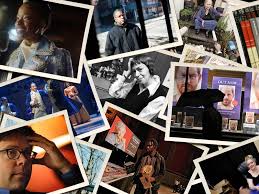
Arabic is not merely a language; it is a bridge that connects millions of people to their cultural and spiritual heritage. As the sacred language of Islam, Arabic has played a pivotal role in preserving and transmitting Islamic art, science, and literature across centuries. Its importance extends far beyond its linguistic dimensions, acting as a medium for intellectual and creative expression that continues to shape the world today.
Arabic as the Language of the Quran
At the heart of Arabic’s significance lies its role as the language of the Quran. For Muslims, the Quran is more than just a holy book; it is a divine revelation, and its original Arabic text is considered inimitable and sacred. The linguistic beauty and complexity of Quranic Arabic have inspired generations of scholars, poets, and artists. Learning the language—often referred to as an endeavor to “learn Quranic Arabic“—is viewed as essential for a deeper understanding of the Quran’s message.
Quranic Arabic is unique in its precision, depth, and ability to convey complex ideas succinctly. These attributes have not only influenced Islamic theology but have also contributed to the development of other fields, such as grammar, rhetoric, and lexicography. The meticulous preservation of the Quran in its original language has ensured that its teachings remain unaltered, serving as a cornerstone of Islamic civilization.
Arabic and Islamic Art
Islamic art is characterized by its emphasis on geometry, calligraphy, and intricate patterns, and Arabic plays a central role in these artistic expressions. Calligraphy, often considered the highest form of Islamic art, uses Arabic script to create visually stunning and spiritually meaningful works. Verses from the Quran and hadiths (sayings of the Prophet Muhammad) are often rendered in beautiful calligraphy, adorning mosques, manuscripts, and even everyday objects.
Arabic calligraphy is not just a decorative art form; it is a way of honoring the sacredness of the words it conveys. The art of calligraphy has been passed down through generations, with masters teaching apprentices the precise techniques required to achieve perfection. This transmission of knowledge has ensured the continuity of this art form, making Arabic an indispensable element of Islamic artistic heritage.
Arabic and the Golden Age of Science
During the Islamic Golden Age (8th to 14th centuries), Arabic became the lingua franca of science and scholarship. Scholars from diverse backgrounds translated works of Greek, Persian, and Indian origin into Arabic, preserving and expanding upon the knowledge they inherited. Fields such as astronomy, medicine, mathematics, and chemistry flourished under the patronage of Islamic rulers, with Arabic serving as the unifying language for these endeavors.
Pioneers like Al-Khwarizmi, whose works laid the foundation for algebra, and Ibn Sina (Avicenna), whose medical texts were used in Europe for centuries, wrote in Arabic. The precision and adaptability of the language made it ideal for conveying complex scientific ideas. Libraries such as the House of Wisdom in Baghdad became hubs of intellectual activity, where Arabic manuscripts were meticulously copied and shared across the Islamic world.
Arabic’s role in preserving and advancing scientific knowledge cannot be overstated. Even as translations of these works into Latin during the European Renaissance allowed them to reach new audiences, the original Arabic texts remain invaluable for understanding the evolution of science.
Arabic and Islamic Literature
Arabic literature is a treasure trove of poetry, prose, and storytelling that reflects the diversity and richness of Islamic culture. From the classical poetry of pre-Islamic Arabia to the enchanting tales of “One Thousand and One Nights,” Arabic has served as a vehicle for creative expression and cultural preservation.
The Quran itself is often regarded as a literary masterpiece, setting a standard for eloquence that has inspired countless poets and writers. Poets like Al-Mutanabbi and Rumi used Arabic to explore themes of love, spirituality, and human existence, creating works that resonate across cultures and time.
Arabic literature has also been a means of preserving history and societal values. Chronicles, biographies, and philosophical treatises written in Arabic provide insights into the lives and thoughts of past generations. These works serve as a bridge to the past, enabling contemporary readers to connect with the intellectual and cultural heritage of the Islamic world.
The Enduring Relevance of Arabic
In the modern world, efforts to preserve and promote Arabic continue to grow. Institutions dedicated to teaching the language, particularly programs that encourage individuals to “learn Quranic Arabic,” play a crucial role in ensuring that this rich linguistic heritage is passed on to future generations. Advances in technology, such as online courses and digital resources, have made learning Arabic more accessible than ever, helping to bridge the gap between tradition and modernity.
Arabic remains a living language, spoken by more than 400 million people worldwide and serving as an official language in 25 countries. Its enduring relevance is a testament to its adaptability and profound cultural significance.
Conclusion
The role of Arabic in preserving Islamic art, science, and literature is a testament to the language’s versatility and depth. As the language of the Quran, Arabic serves as a spiritual anchor for Muslims, while its contributions to art, science, and literature highlight its broader cultural and intellectual importance. Efforts to “learn Quranic Arabic” and engage with the language ensure that this legacy continues to inspire and enrich humanity. By embracing Arabic, we not only connect with the past but also lay the foundation for a future that values and celebrates the diversity of human achievement.
Write and Win: Participate in Creative writing Contest & International Essay Contest and win fabulous prizes.


